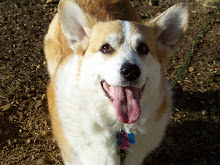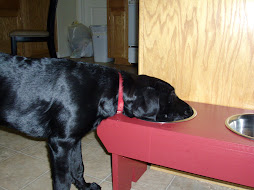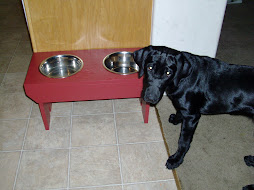 Since so many pups (and their parents) have been asking me about Merlin's Bark Products line of elevated dog (and cat) bowl feeders and how to figure out what size would be perfect for them - I figured it would be helpful if I included that info in my blog.
Since so many pups (and their parents) have been asking me about Merlin's Bark Products line of elevated dog (and cat) bowl feeders and how to figure out what size would be perfect for them - I figured it would be helpful if I included that info in my blog.So here's some guidelines to help inquiring pups that want to know:
#1 The feeder's height. The usual guideline to find the perfect feeder height is six inches below the pup's withers (i.e. front shoulders). Another broader guideline is that the feeder's height be between 4 to 10 inches below the withers. For example, if you got a tiny pup and six inches seem like a lot, four inches or less should do.
#2 The bowl capacity. My general thought is that the bigger the bowl the better! I know that a lot of pups would agree with me on that, but I also realize that a lot of owners would disagree. So I have included some bowl size measurements below so you can get a good idea of what size the bowls are that we use:
1-pint bowl: inside measures - 4 1/2" wide x 2" deep (holds 2 cups)
1-quart bowl: inside measures - 5 1/2” wide x 2 1/2” deep (holds 4 cups)
2-quart bowl: inside measures - 7 1/4” wide x 3” deep (holds 8 cups)
3-quart bowl: inside measures - 8 3/4" wide x 3 1/2" deep (holds 12 cups)
Once you have figured out what size feeder and bowl would be perfect for your pup - all that is left for you to do is stop by my Etsy store, and pick our which color you like best. So measure your pup and stop by Merlin's Bark Products to find that perfect feeder for your pup (or kitty).
I'll be barking to you later!












2 comments:
This type of message always inspiring and I prefer to read quality content, so happy to find good place to many here in the post, the writing is just great, thanks for the post. automatic feeder for dog
This is certainly the cheapest option that you have. Unfortunately, like hip dysplasia in dogs that has no medical history of breeding to dogs that have this condition, these dogs do not tend to stay in their best shape. Get more information about hip dysplasia in dogs on this link.
Post a Comment